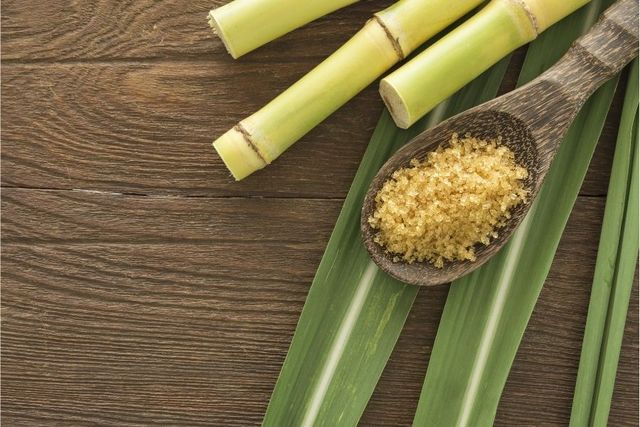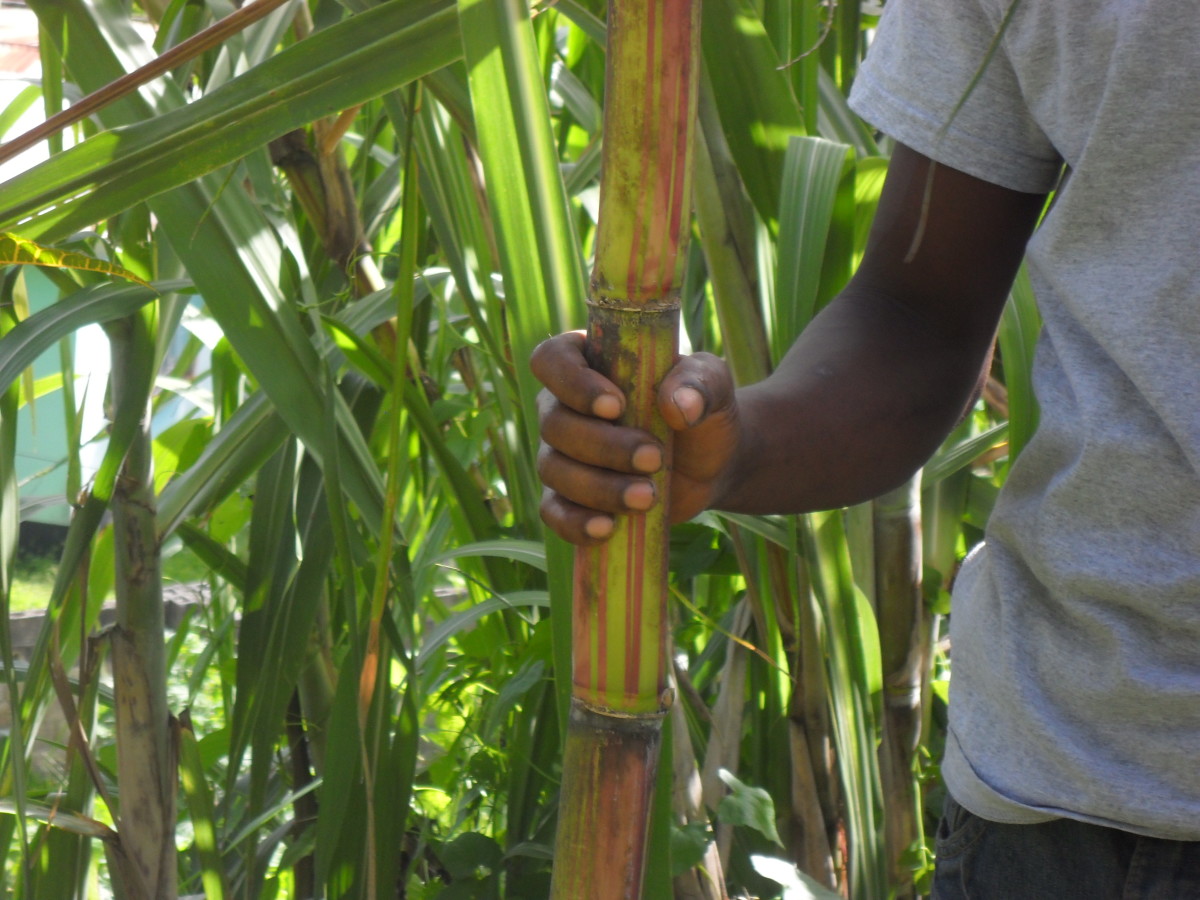What Are Sugar Canes Used For in Craft Cocktails and Mixology
Wiki Article
All Concerning Sugar Canes: What Are Sugar Canes Used For and Their Function in Global Agriculture?
Sugar walking canes act as a foundation of global farming, primarily identified for their duty in sugar manufacturing. They additionally add to the creation of byproducts like molasses and ethanol. These facets not just support different markets yet likewise impact economic security in rural areas. Nevertheless, the cultivation of sugar walking canes faces considerable environmental difficulties. Comprehending their diverse duty prompts additional expedition right into their farming practices and sustainability efforts.The Agricultural Refine of Sugar Cane Cultivation
Although sugar cane growing might differ by area, the basic agricultural process continues to be consistent. The primary step includes choosing high-yielding selections suitable for regional environments. Prep work of the dirt is essential, typically calling for tillage and the enhancement of fertilizers to improve fertility. Growing usually occurs throughout the rainy period, with farmers using either whole stalks or cuttings to develop brand-new crops.As the plants grow, they need diligent care, including weed control, bug administration, and irrigation, relying on the ecological problems. Farmers check the sugar walking stick's development cycle, which usually extends 10 to 24 months, prior to gathering. Harvesting is labor-intensive, frequently conducted by hand or with specialized equipment, ensuring minimal damages to the stalks. Adhering to harvest, the walking cane is moved to refining centers. This meticulous farming procedure not just supports local economies yet likewise plays a significant role in international agricultural techniques, adding to food and energy materials.Sugar Production: From Cane to Crystal
The trip of sugar production begins the minute newly harvested sugar walking cane comes to processing centers. The very first step involves cutting the walking cane and washing to prepare it for removal. Utilizing high-pressure rollers, the juice is extracted from the smashed cane, causing a wonderful liquid referred to as sugarcane juice. This juice goes through information, where impurities are eliminated through the enhancement of lime and heat.Next, the clarified juice is focused by boiling it down to develop a thick syrup. This syrup is then taken shape by cooling, enabling sugar crystals to create. The crystallized sugar is divided from the staying syrup, referred to as molasses, with centrifugation.Finally, the sugar crystals are washed and dried out, resulting in the familiar granulated sugar (What Are Sugar Canes Used For). This procedure changes raw sugar cane into an item that is essential to numerous culinary and industrial applications, highlighting the relevance of sugar in worldwide farmingBiofuels and Sugar Canes: A Lasting Future
As the world progressively seeks lasting energy services, sugar walking canes have actually become an appealing resource for biofuels. The biomass stemmed from sugar canes can be exchanged ethanol, a renewable fuel choice that significantly minimizes greenhouse gas exhausts contrasted to fossil fuels. This procedure not only gives a cleaner energy resource but likewise advertises energy self-reliance for several countries.In addition, sugar cane cultivation supports country economies by producing work in both farming and biofuel manufacturing sectors. The usage of sugar walking sticks for biofuel production additionally urges agricultural diversification, which can improve dirt wellness and lower reliance on single crops. The by-products of sugar walking stick processing can be used for electricity generation, additionally adding to a lasting energy cycle. As nations undertaking to satisfy renewable resource targets, sugar walking canes are poised to play a crucial duty in forming an extra lasting future in the biofuel landscape.
The Role of Sugar Canes in Drink Manufacturing
Sugar canes play a considerable duty in drink manufacturing, functioning as a main component in rum and contributing to the sweetness of many soft beverages. In addition, their natural juices are utilized in various drinks, improving flavor and allure. This convenience underscores the relevance of sugar walking sticks in the international drink market.Sugar Cane in Rum
Rum manufacturing is elaborately connected to the farming of sugar cane, an essential crop that supplies the essential fermentable sugars needed for fermentation. This procedure begins with the removal of juice from collected sugar canes, which is then either fermented straight or refined into molasses. Yeast is included to convert the sugars right into alcohol, causing a diverse series of rum designs, from light to dark varieties. The geographical area where the sugar cane is grown greatly affects the taste profile of the rum, with variables such as dirt type and climate playing crucial roles. Nations like Barbados, Jamaica, and Cuba are renowned for their rum manufacturing, reflecting the cultural and historic relevance of sugar cane within the worldwide drink industry.Soft Drinks Sweetener Source

Natural Juice Production Uses
In addition to its significant duty in soda manufacturing, sugar walking cane is additionally essential in the natural juice industry. The juice extracted from sugar cane, called walking cane juice, is celebrated for its natural sweetness and unique flavor account. This juice is generally taken in fresh in various areas, especially in tropical nations, where it is enjoyed as a revitalizing drink. Furthermore, cane juice functions as a base component in a series of all-natural fruit juices and shakes, improving both preference and dietary worth. Its natural properties make it an eye-catching option to sweetening agents, interesting health-conscious customers. Overall, sugar walking cane's convenience in juice production emphasizes its significance in modern-day drink offerings worldwide.Innovations in Sugar Walking Stick Byproducts
Innovations in sugar walking cane results are leading the way for sustainable options in different sectors. Biofuels stemmed from sugar walking cane provide an alternative power resource, while advancements in sustainable product packaging are lowering dependence on standard materials. These advancements highlight the flexibility and potential of sugar cane past its key use in beverage production.
Biofuels From Sugar Walking Cane
Just how can the byproducts of sugar walking stick add to sustainable power remedies? The conversion of sugar cane into biofuels provides an encouraging opportunity for renewable resource. By using the fibrous deposit, recognized as bagasse, producers can generate bioethanol through fermentation procedures. This bioethanol can offer as a lasting choice to nonrenewable fuel sources, minimizing greenhouse gas discharges and dependence on non-renewable sources. In addition, molasses, an additional result, can be fermented to produce biofuels, maximizing resource effectiveness. The power produced from sugar walking stick not just supplies a cleaner gas source however likewise improves the total economic viability of sugar manufacturing. By integrating biofuel manufacturing into their operations, sugar walking cane sectors can play a necessary role beforehand lasting energy options around the world.Lasting Packaging Solutions
Lasting packaging services are progressively being established from sugar cane results, showcasing the convenience of this farming staple. Innovations such as naturally degradable plastics originated from bagasse, the coarse deposit left after juice extraction, are getting traction. These products use an environmentally friendly alternative to traditional plastics, lowering dependence about his on fossil fuels and decreasing carbon footprints. Additionally, sugar cane-based product packaging is compostable, breaking down normally without damaging the setting. Firms are currently checking out these options to straighten with consumer need for sustainability. As recognition of plastic contamination expands, the adoption of sugar cane-derived product packaging is anticipated to rise, positioning sugar canes as a crucial player in the change to greener packaging remedies in different sectors.Economic Impact of Sugar Walking Cane Farming

Sugar walking stick farming has deep origins in several economies, its financial influence extends far beyond agricultural production. This plant functions as a considerable resource of revenue for millions of farmers worldwide, particularly in establishing countries where farming is a primary income. Sugar walking stick adds to neighborhood economies through task development in handling, harvesting, and farming. The sector additionally promotes growth directory in related industries such as transportation, equipment manufacturing, and food processing.Furthermore, sugar walking stick is a vital player in international trade, affecting worldwide markets and prices. Countries that generate sugar walking stick usually depend on exports to improve their financial stability. The by-products of sugar cane, such as ethanol and molasses, expand income streams for farmers and add value to the agricultural sector. In general, the economic implications of sugar walking cane farming are profound, affecting not only farmers but additionally whole neighborhoods and national economies.
Environmental Factors To Consider in Sugar Walking Stick Farming
While sugar walking stick farming plays a necessary function in several economic situations, it also elevates considerable ecological worries that can not be overlooked. The considerable use plant foods and pesticides in sugar walking stick cultivation usually results in dirt degradation and water contamination. Drainage from these chemicals can contaminate neighboring water bodies, hurting marine communities. In addition, the monoculture practices common in sugar walking cane farming lower biodiversity, making communities a lot more vulnerable to bugs and diseases.Deforestation is an additional critical problem, as land is frequently gotten rid of to give way for sugar haciendas, bring about environment loss for wild animals and enhanced carbon exhausts. The high water intake needed for sugar walking stick irrigation can strain regional water resources, specifically in dry regions. As international need for sugar continues to increase, resolving these ecological difficulties ends up being critical to guarantee lasting techniques in sugar walking stick farming.Regularly Asked Inquiries
What Are the Nutritional Perks of Sugar Cane?
The dietary advantages of sugar walking cane mostly include its high carb content, offering power. you can look here In addition, it includes vitamins, minerals, and anti-oxidants that may support overall wellness, though small amounts is vital because of its sugar content.Just How Does Sugar Walking Stick Affect Local Ecosystems?
Sugar cane cultivation can substantially influence regional communities by modifying land usage, impacting biodiversity, and calling for significant water resources. Furthermore, it may lead to soil deterioration and chemical drainage, disrupting surrounding habitats and wildlife populations.What Is the History of Sugar Walking Stick Cultivation?

Exist Alternatives to Sugar Walking Cane for Sugar Production?
Alternatives to sugar walking cane for sugar production consist of sugar beets, corn, and various tropical plants like sorghum and agave (What Are Sugar Canes Used For). These plants offer diverse sources of sweetness, each with distinct growing needs and ecological influencesExactly How Do Weather Condition Patterns Impact Sugar Walking Cane Yields?
Weather patterns greatly influence sugar walking stick yields through temperature fluctuations, rains amounts, and seasonal cycles. Dry spell or excessive rainfall can hinder development, while optimal problems improve photosynthesis, inevitably influencing the amount and quality of the harvest. The trip of sugar production starts the minute fresh harvested sugar cane shows up at processing centers. The taken shape sugar is divided from the remaining syrup, understood as molasses, through centrifugation.Finally, the sugar crystals are washed and dried out, resulting in the familiar granulated sugar. Rum manufacturing is intricately linked to the growing of sugar walking stick, an essential plant that supplies the required fermentable sugars required for fermentation. Additionally, the monoculture practices widespread in sugar walking cane farming lower biodiversity, making environments extra at risk to bugs and diseases.Deforestation is an additional essential concern, as land is frequently cleared to make method for sugar vineyards, leading to environment loss for wildlife and enhanced carbon discharges. Alternatives to sugar walking stick for sugar production consist of sugar beets, corn, and different tropical plants like sorghum and agave.Report this wiki page